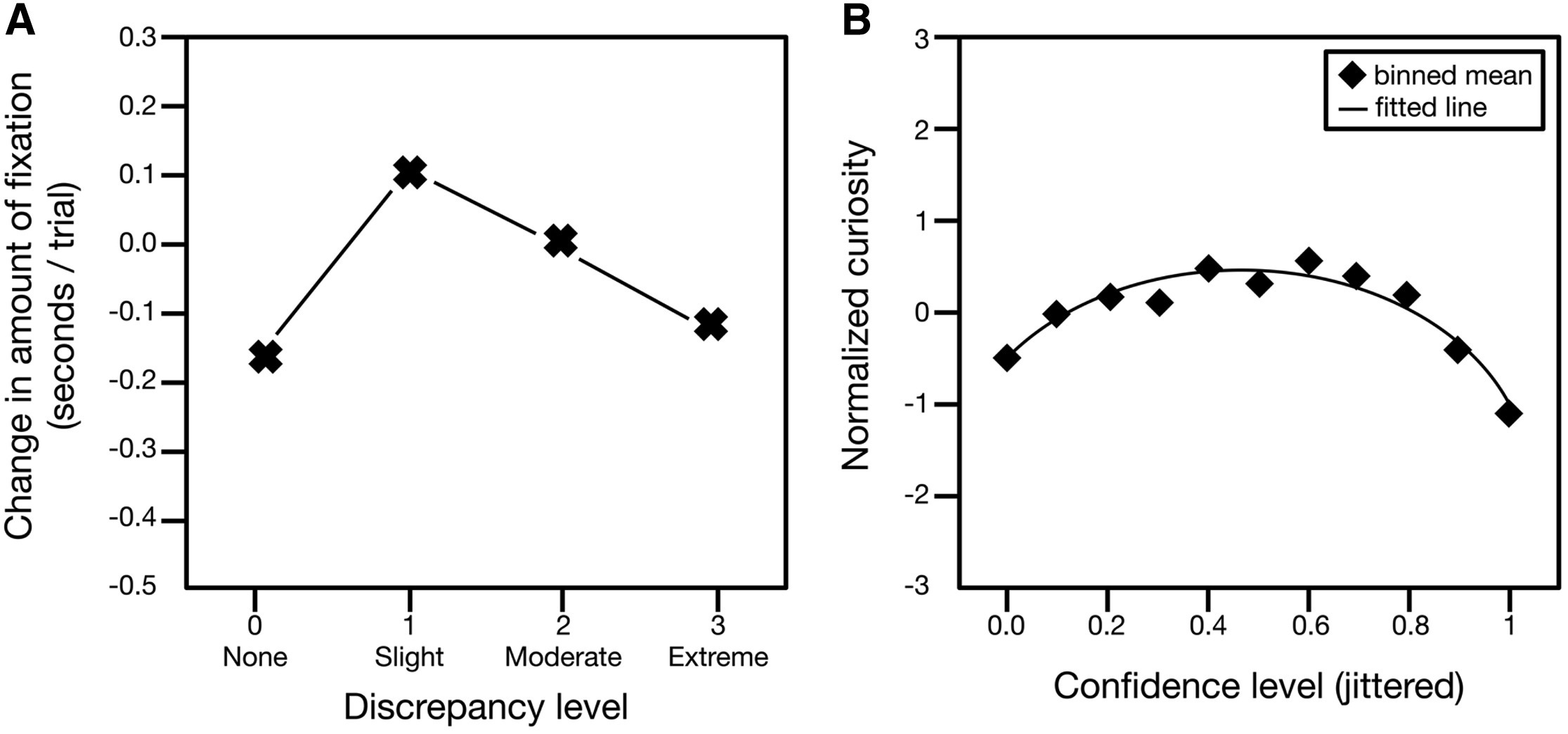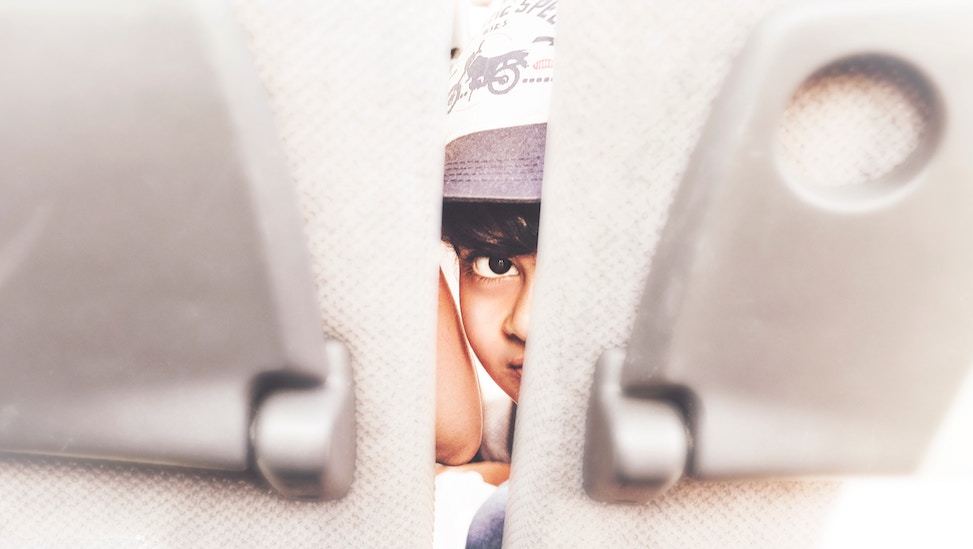Creative Thinking
The Curiosity Gap: How Consumer Psychology Is Driven by What’s Missing
By Nicola Brown on April 24, 2018
Consumer psychology and audience behavior sometimes seem endlessly complex. However, much of our behavior and decision-making can be traced back to a surprisingly simple psychological mechanism: curiosity.
Picture this: You're lying in bed on the brink of falling asleep when-CRASH-a sudden noise from just outside the door makes you jump. Do you a) lie awake trying to figure out what it could have been or b) get up and investigate?
Whether you chose a) or b), your reaction is fueled by curiosity. Curiosity is such an ingrained tendency that we're often unaware of the influence of this powerful force. In a nutshell, curiosity is the desire for information, and this desire is strongest when we experience what is known as the curiosity gap-missing information. We have a burning desire to know what caused the noise outside the bedroom door.
What Is the Curiosity Gap?
In his seminal paper The Psychology of Curiosity: A Review and Reinterpretation, researcher George Loewenstein explains that curiosity arises when attention becomes focused on a gap in one's knowledge. These information gaps produce a feeling of deprivation, which is an aversive psychological state (we don't like feeling deprived!). We're motivated to resolve this state by obtaining the missing information.
Many scientists believe curiosity is an internally motivated (or "intrinsic") drive, one of the most basic elements of our behavior.
This hunger for information doesn't just manifest itself on an individual level. Curiosity motivates everything from foraging behavior in animals (it's even been identified on a rudimentary level in worms) to global economies. Think of this: We live in a time that's been named the Information Age. Our global economy runs on the collective information-seeking behavior of humanity.
Just think about how much time you spend seeking and consuming information. So many of the digital platforms we mediate our lives through are designed to endlessly trigger our curiosity, like the never-ending social media feeds of Twitter, Instagram, and Facebook. The Information Age and its technological developments gave birth to clickbait, which is designed to exploit our curiosity.
A recent research paper in the journal Neuron attempts to knit earlier interpretations of curiosity with more modern insights from new technological advances in neuroscience. As babies, curiosity drives us towards novel objects that are bright, vivid, and startling. Later in life, it transforms into a higher intellectual impulse toward such things as more complete scientific and philosophic knowledge.
Image attribution: Alexander Dummer
The Situational Determinants of Curiosity
In order to understand how curiosity operates in any one instance, we need to understand that it varies significantly depending on the particular context.
Consider a trivia quiz. In a recent study, researchers discovered that people were most interested in finding out the answers to trivia questions in which they had a moderate level of confidence in their answer. They were less curious about the answers when they had a very high or very low level of confidence in their answers. So there's a sweet spot for curiosity.
From Kidd & Hayden (2015):
(A) Data from Kinney and Kagan (1976). Attention to auditory stimuli shows an inverted U-shaped pattern, with infants making the most fixations to auditory stimuli estimated to be moderately discrepant from the auditory stimuli for which infants already possessed mental representations.
(B) Data from Kang et al. (2009). Subjects were most curious about the answers to trivia questions for which they were moderately confident about their answers. This pattern suggests that subjects exhibited the greatest curiosity for information that was partially-but not fully-encoded.
Neuroscientific imaging reveals that curiosity has a similar effect to receiving a reward. New information, or information that fills in the gaps in our prior knowledge, is treated as a reward by our brains.
This makes sense from an evolutionary perspective; new information helps us better navigate our environments, avoid threats, find food, and so on. Throughout our lives, we learn and progress by reducing uncertainty in the world. Our curiosity pushes us towards interacting with things that are uncertain so we can gain new information.
The Problem of Information Overload
One of the problems with the Information Age is the overabundance of information. Our curiosity isn't armed with unlimited cognitive resources, so we are selective about the information we pursue. We block out way more than we take in.
In a study in the Journal of Experimental Social Psychology, researchers explored how to pique curiosity strategically and overcome our resistance to the overabundance of novel information we're presented with. The researchers found that we are much more likely to pay attention to new information when we have experienced a curiosity gap.
This means that revealing new information about something we have already evaluated heightens our curiosity and drives our attention to the new information. This was found to be particularly true when the new information is of a diagnostic quality. In other words, we pay the most attention to new information that has the greatest explanatory power for previous information.
The Slow Reveal of Storytelling
This research holds important implications for marketing leaders seeking a better understanding of audience behavior amidst the modern challenges of information overload.
While the curiosity gap does help explain our addiction to clickbait, this kind of content is a primitive, fast-food exploitation of curiosity. While some of the psychological principles behind clickbait can be beneficial to marketers, it's commonly considered distasteful and could even harm your brand perception in the long term.
A much more intellectually advanced approach, and one that treats your audience with respect, is strong brand storytelling. A good story evolves slowly, revealing layers of insight over time that help explain and enrich your initial understanding.
A story can even be thought of as a series of curiosity gaps where we keep reading because we're motivated to fill in the missing information.
Image attribution: Cristina Gottardi
Storytelling Tips to Heighten Curiosity
Don't Reveal Everything at Once
Remember to leave gaps and missing information in your story to motivate your audience to come back or keep reading for more.
Provide Diagnostic Information
Your story progression should be built on sufficient diagnostic (or explanatory) information that not only builds on prior information but can help your audience better understand it.
Do Your Homework
To hit that sweet spot for curiosity, you need to know how much your audience already knows about your brand or the content you're offering. If they know too much or too little, you'll lose their interest. Finding the right balance between the familiar and the unknown will have the greatest impact on their curiosity.
The curiosity gap might be one of the biggest motivating mechanisms we have for information-seeking. Its expression can be observed in some of our most basic instincts right up to some of our most intellectual pursuits.
Storytelling that makes good use of curiosity gaps can function as a form of intrinsic reward for audiences. It's like a narrative game that results in one of the most gratifying kinds of prizes for the mind-and everyone gets one.
For more insights into consumer psychology, subscribe to the Content Standard newsletter.
Featured image attribution: Paul




